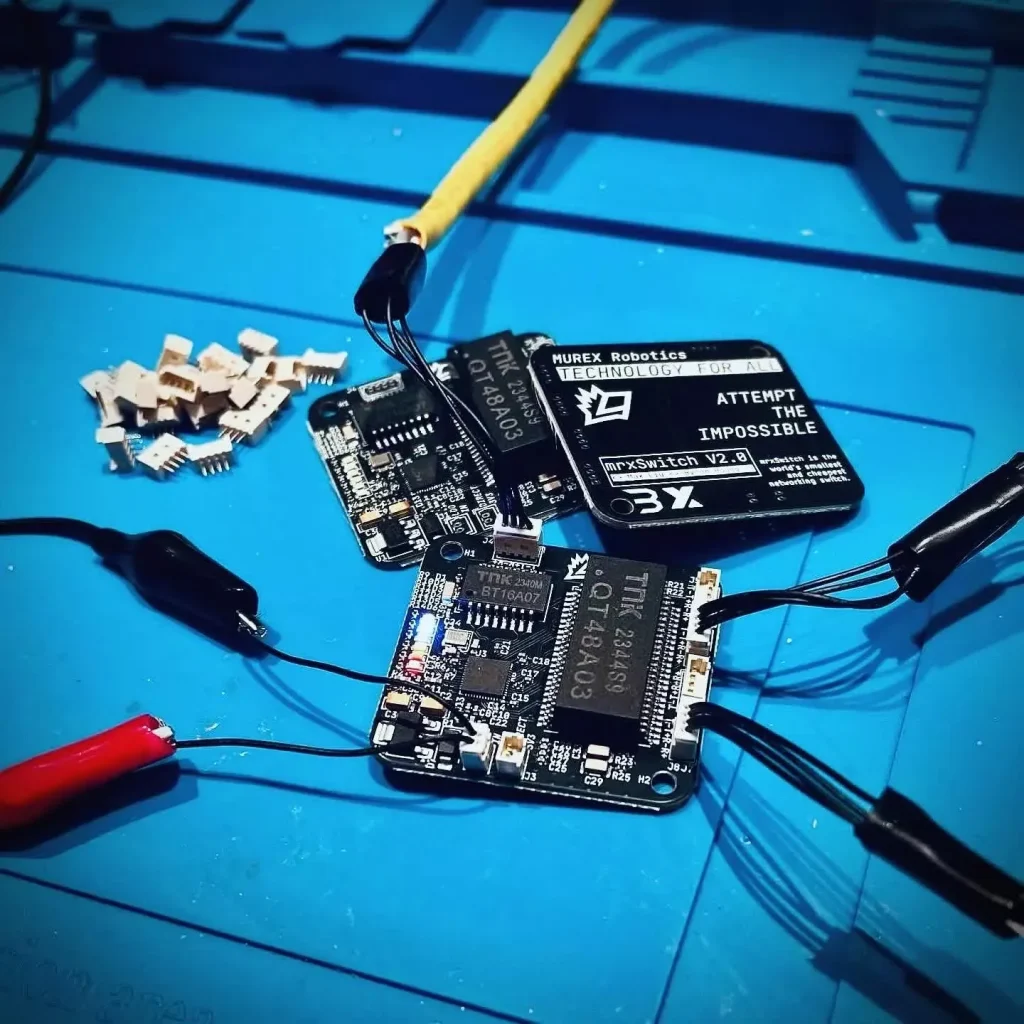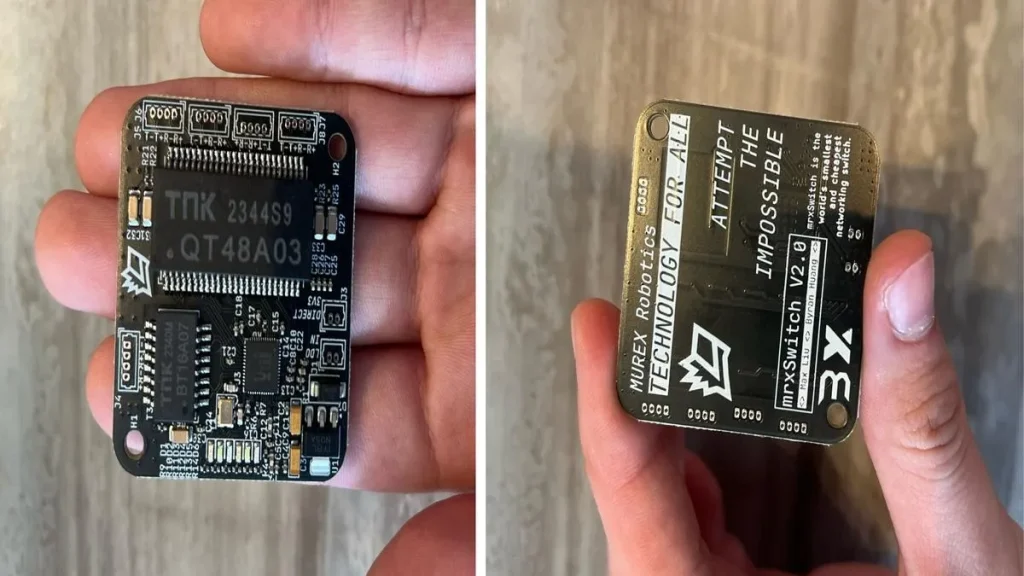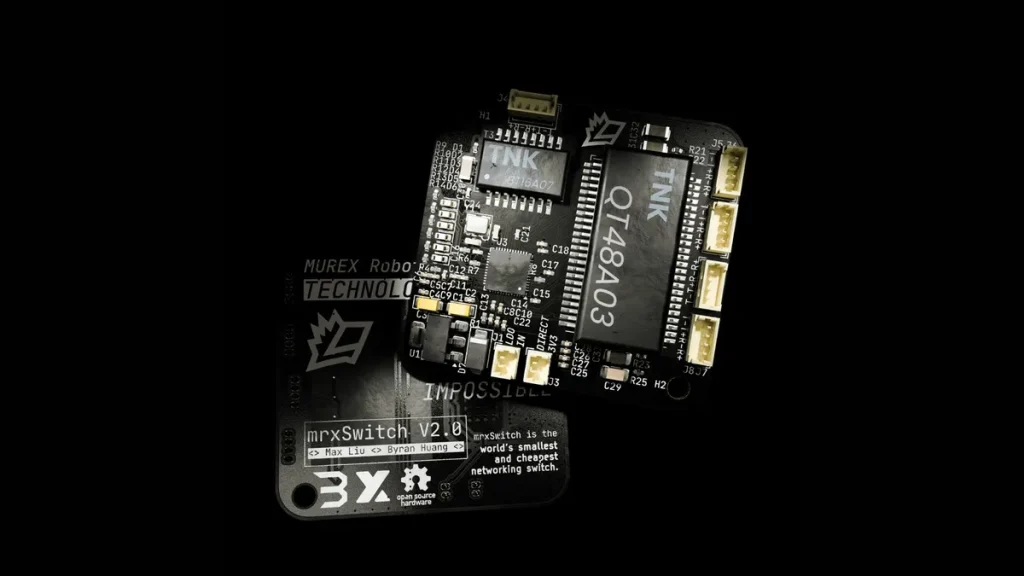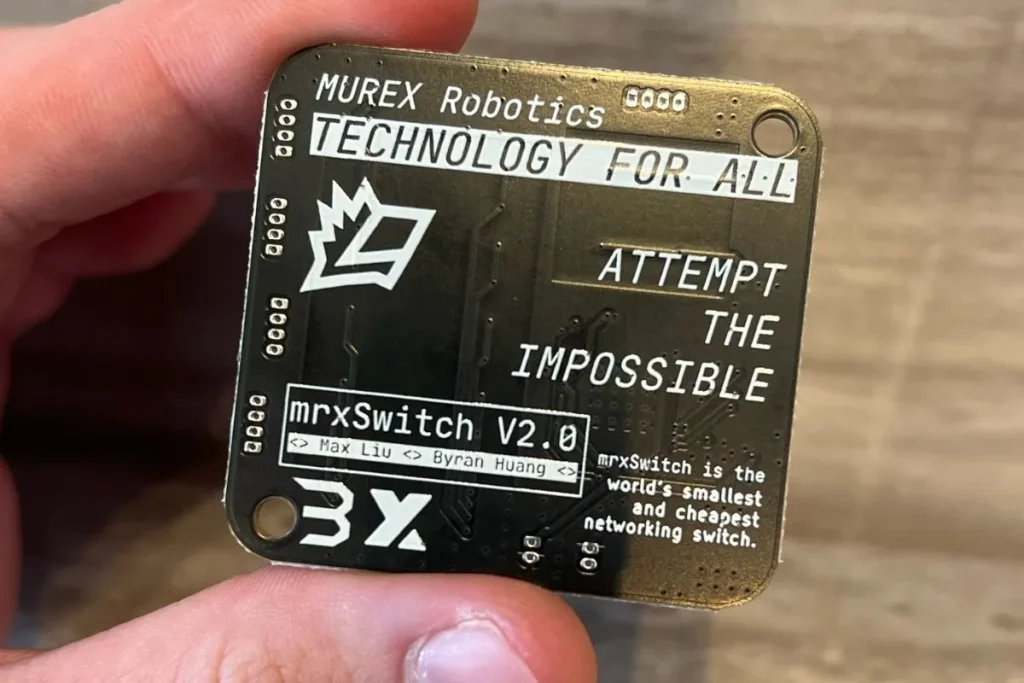A new innovation has emerged from the robotics lab of Phillips Exeter Academy in New Hampshire, where students from Murex Robotics have successfully developed the world’s smallest and cheapest network switch. Named the mrxSwitch v2.0, this compact device is poised to revolutionize connectivity solutions in various technological domains.

The inspiration for this invention stemmed from a practical need during the construction of a remotely operated vehicle (ROV) for an underwater drone competition. Facing a scarcity of affordable embedded Ethernet switches that could meet their specifications, the team decided to create their own solution.
Measuring a mere 44.9mm x 42.2mm, the mrxSwitch v2.0 boasts five 100Mbps Ethernet ports, encapsulated within an impressively compact footprint. What sets this device apart is not just its size but also its affordability, priced at just under $15 per unit, making it accessible for a wide range of applications.

Central to its design is the utilization of the IP175G integrated circuit, renowned for its reliability and ease of integration into embedded systems. The team meticulously engineered the switch to accommodate input voltages ranging from 7 to 15 volts, ensuring compatibility across different operational environments.
In terms of construction, the switch features a 4-layer printed circuit board (PCB) designed to minimize noise and ensure superior signal integrity. The inclusion of Bob Smith termination further guarantees compliance with IEEE 802.3 Ethernet standards, enhancing performance across its network ports.

“We saw a gap in the market for a compact, affordable Ethernet switch that could handle the demands of our ROV project,” remarked a team spokesperson. “Our solution not only meets these needs but also opens up possibilities for a wide array of applications, from autonomous underwater vehicles to consumer electronics and DIY projects.”
Looking ahead, Murex Robotics is committed to refining the mrxSwitch v2.0. Future improvements include optimizing the switch’s layout to further reduce its footprint without compromising functionality. Plans also include upgrading the voltage regulation system to improve efficiency, potentially integrating high-frequency DC-DC converters or advanced heat dissipation solutions.

Moreover, the team aims to enhance the switch’s versatility by integrating EEPROM for configuration options and implementing serial control capabilities, which would facilitate seamless integration with other systems in future iterations.
